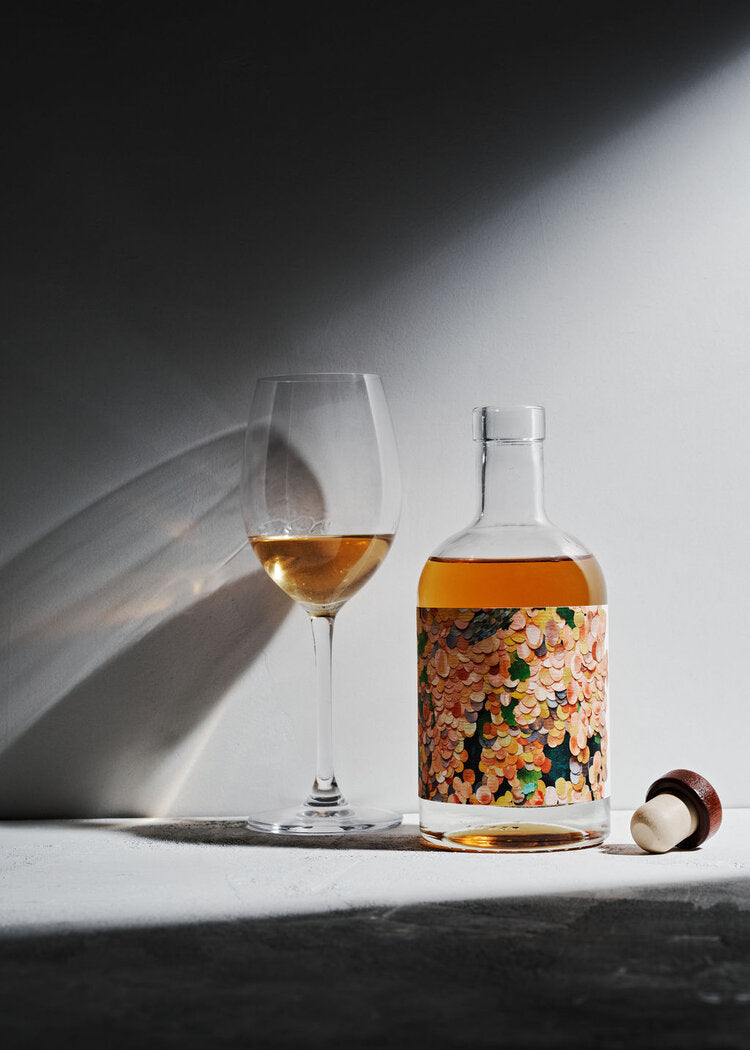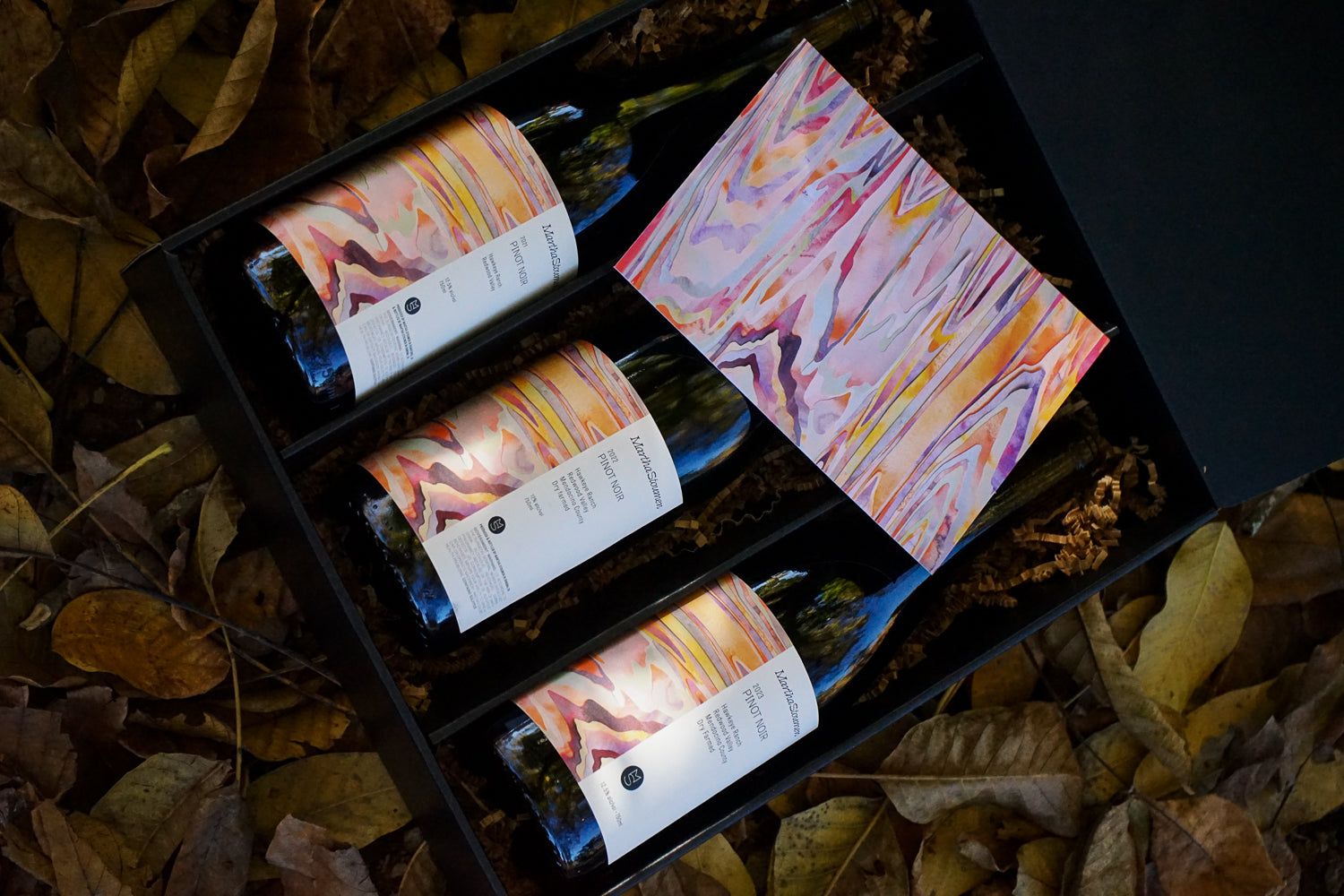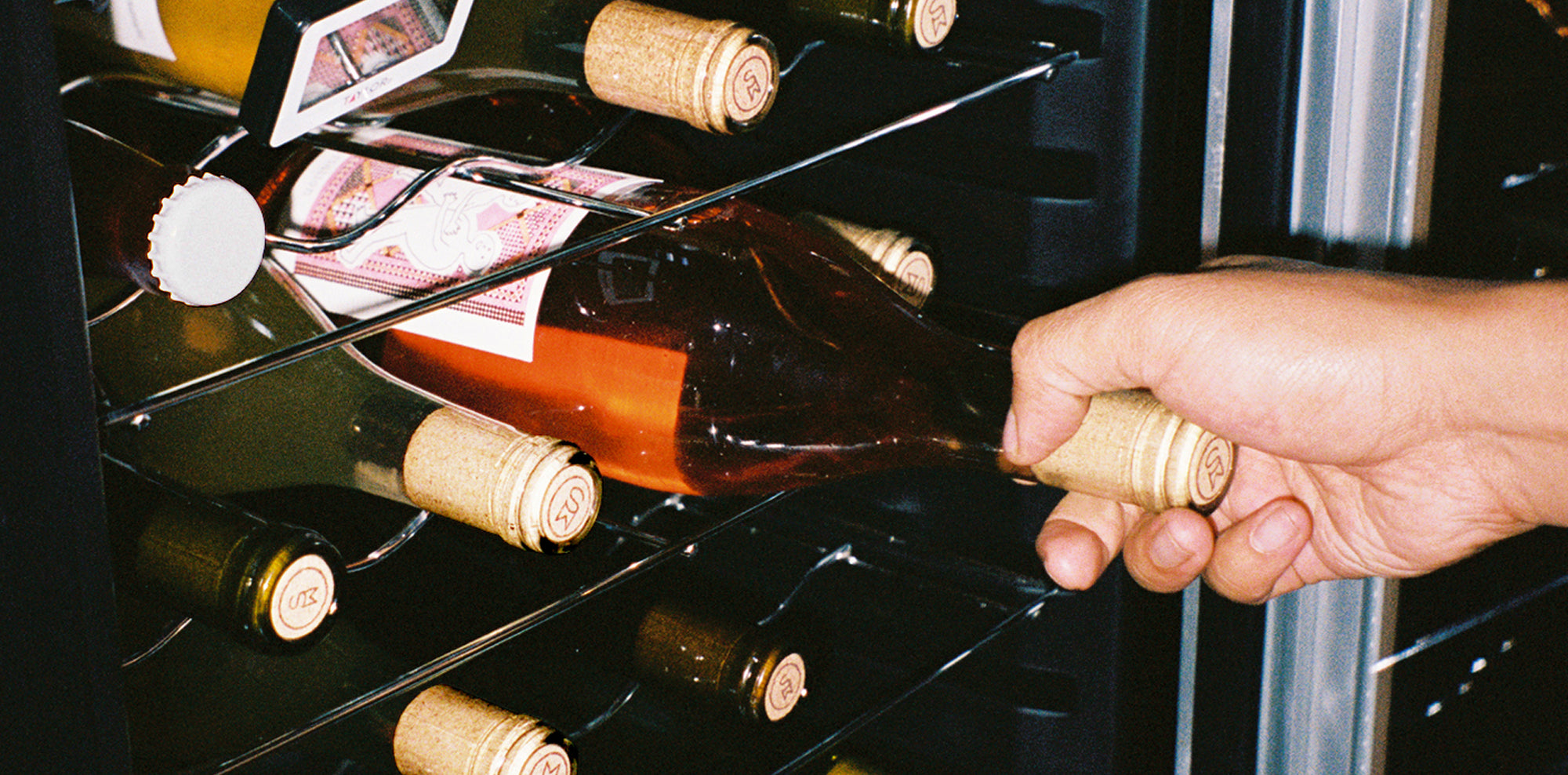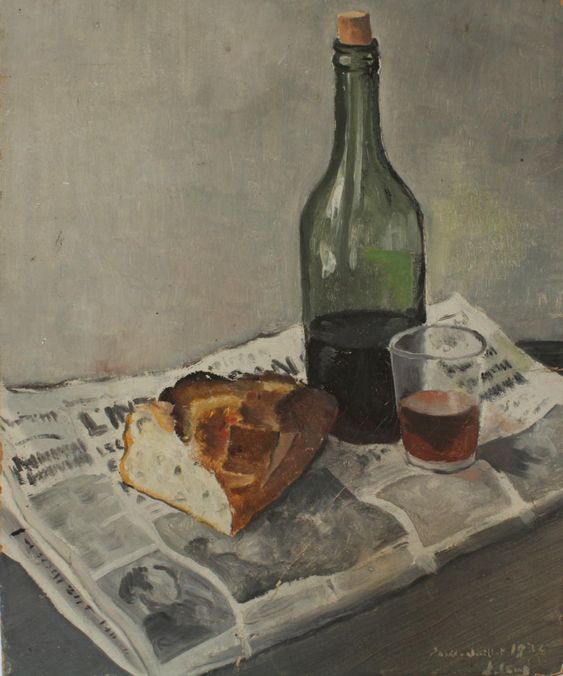It starts with a storm
In February of 2019 our community experienced a “100 year” flood. I vividly remember the rainstorm the night before I came into the winery. My husband was preparing dinner under the awning of our outdoor kitchen while I, unbeknownst to him, took a pregnancy test. I held the positive result up to the window and knocked loudly to draw his attention. He smiled — shocked and joyous — then came inside to hold me while the rain assaulted our little home. That night, we stood in the kitchen returned to the kitchen to finish dinner and looked on as rivers formed and the gopher holes in the yard gushed water like geysers.
The next morning had the type of blue sky and clouds you’d see in a Miyazaki film. Peaceful and clean. Tim, my assistant winemaker, called to let me know the parking lot at the winery was underwater and the waters were rising quickly. The rest of the Pax crew rushed to the winery, donning waders or garbage bags taped around our thighs, and attempted to secure water from entering the interior of the winery. We forklifted what we could on top of tanks, crossed our fingers, and waded back to high ground as the water continued to rise.
After the flood
When the waters subsided, we entered the winery and were relieved to see that the water line was just shy of our lowest barrels, so our wine was safe. All the walls of the winery needed to be torn out and a flood remediation team came in to flash heat the building to prevent mold from forming. We insisted they move room by room, and that all wine be moved to another room prior to the flash heat treatment, but in the flurry of activity they left one tank of rosé in a room while it was heated. After a month we were allowed back into the winery. I tasted that tank on the day we were set to bottle and it had unfortunately gone mousey.
We winemakers don’t like talking about it, but mistakes, or simply uncontrollable outcomes, will arise. In the cellar we are extremely clean and observant. I have 15 years of minimalist winemaking under my belt. But making natural wine is hard. Like any agricultural product, making wine is about playing the hand you’re dealt.
I was left with a few options:
Amend the wine with synthetic ingredients
My desire to joyously transmit the substance of my home, California, requires I work with a light hand in the cellar. Most of the more manipulative winemaking tools mute terroir, which would completely negate my pursuit. So cross fix-it tools off the list.Send a wine into the world that I didn’t completely believe in
My name is on the label. I won’t knowingly release a wine that isn’t the truest expression of itself. Plus, faulty wines distracts me as a drinker, so that also wouldn’t do.Dump the wine down the drain and take on the economic loss.
Wasting my, and mother nature’s hard work was out of the question.
It wasn’t just a question of where I could bury a wine like this, I was left with the question of how I could make this wine new! A true rebirth. I’d seen magical transformations happen in farming all the time, both with process and principle. Compost? Transcendental. I dreamed of something delicious that could grow from what we already had available and would keep me true to my craft. Despite the 550 gallon challenge before us, the forever optimist in me knew a phoenix moment was brewing.
hOpe Returns
I didn’t need to look far. In fact, a path forward was just next door at Spirit Works Distillery. We wheeled our tank of rosato across the parking lot and distilled the wine into just 52 gallons of brandy. Hope came back as I tasted the various fractions from the still. The distillation process didn’t simplify this wine, it unleashed the complexity of the wine. From there, we split the brandy with Spirit Works and aged our 26 gallons brandy for 1.5 years waiting for inspiration to strike, and strike it did when I tasted my first Orange Muscat grape during a spontaneous vineyard visit in the late summer of 2020.
We harvested the Muscat almost immediately and the sweet, unfermented juice was combined with our aged brandy, at a ratio of approximately 3:1. The addition of high proof brandy to juice immediately arrests the possibility of fermentation, negating the need to add sulfites or filtering. We aged the wine in one neutral oak barrel for 3 months, then hand bottled just over 400 bottles.
In November 2020, we released Diluvio, a seductive and soothing dessert wine. Each bottle is proof that with patience and care phoenix moments are possible.

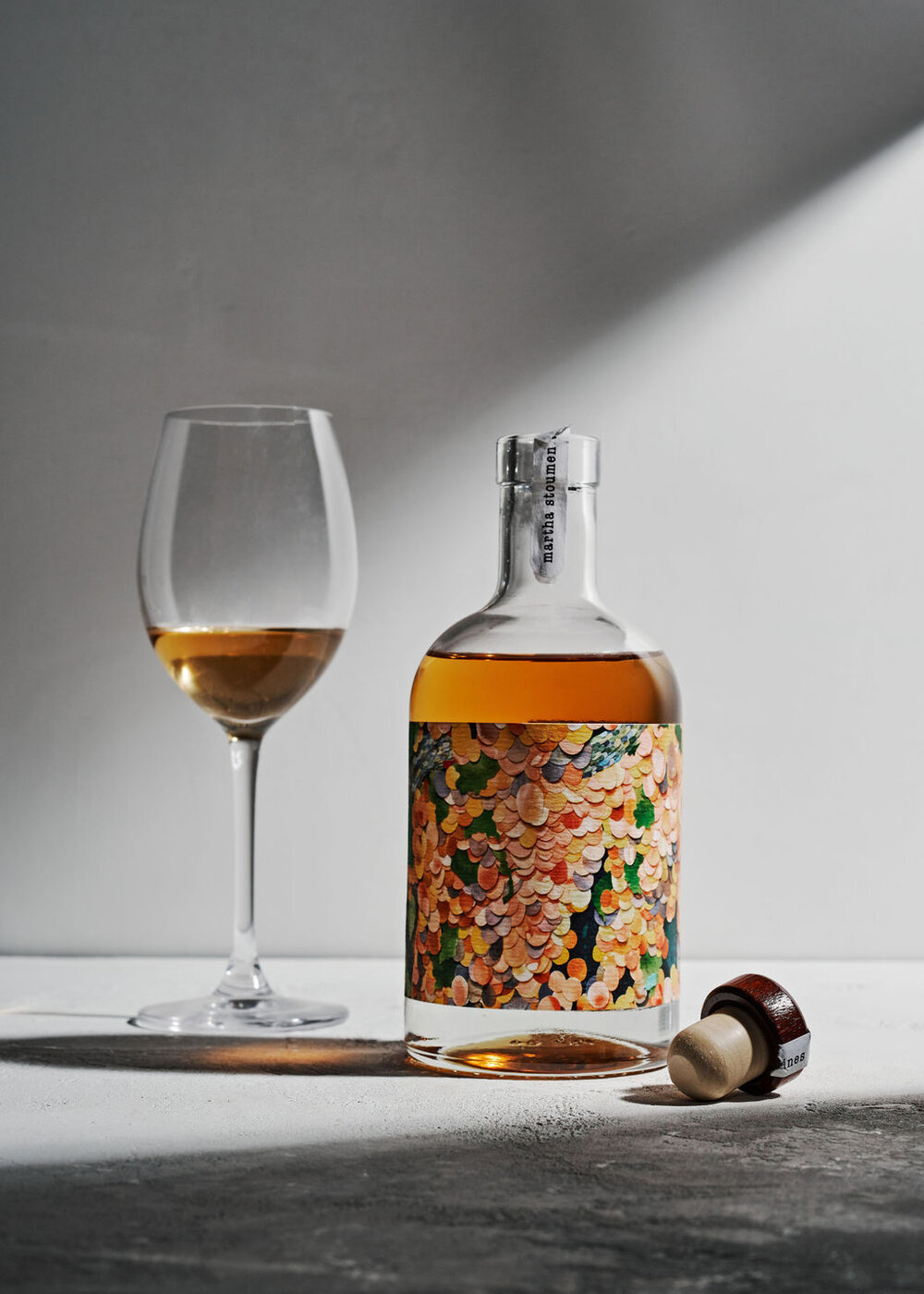
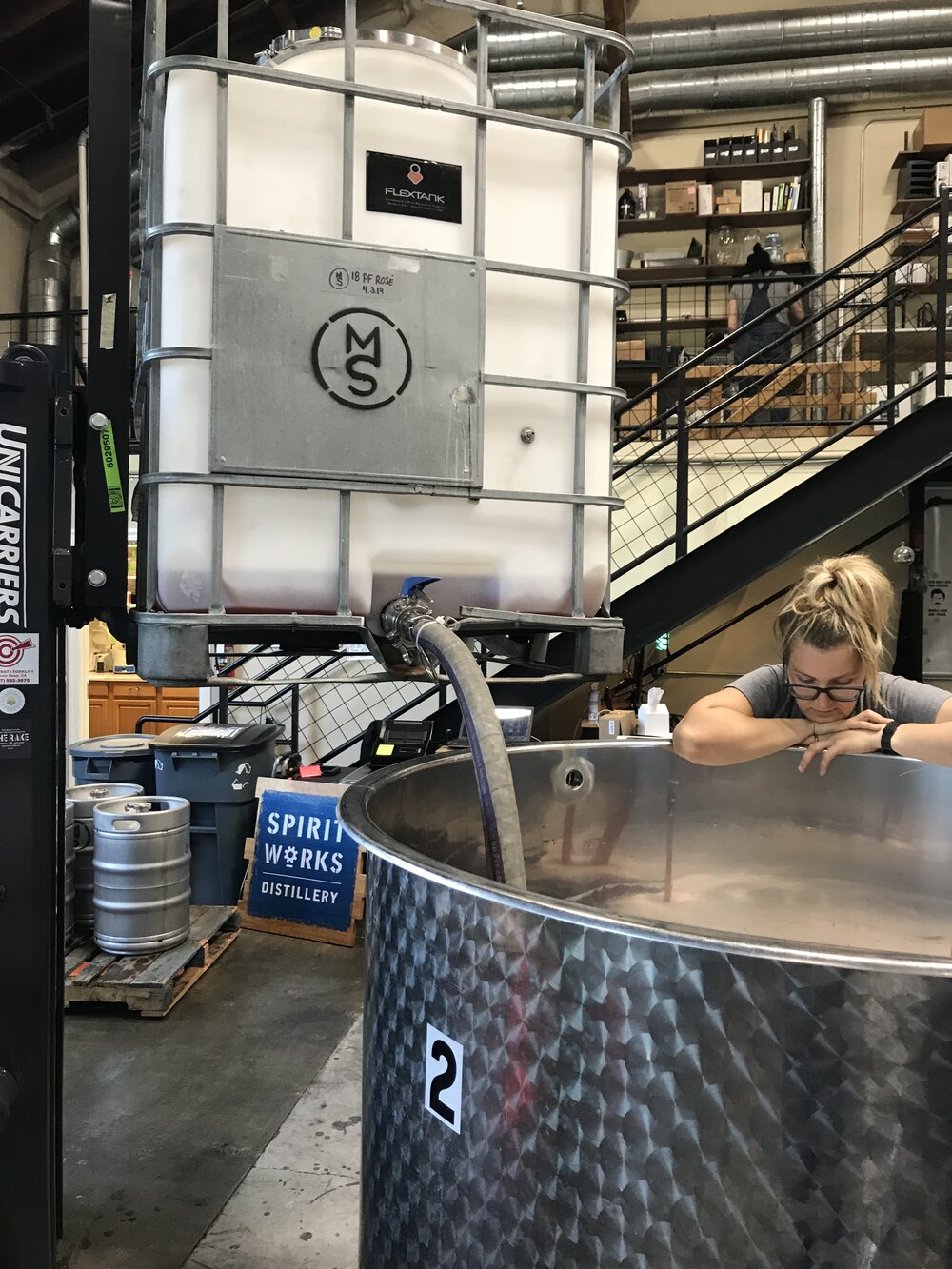


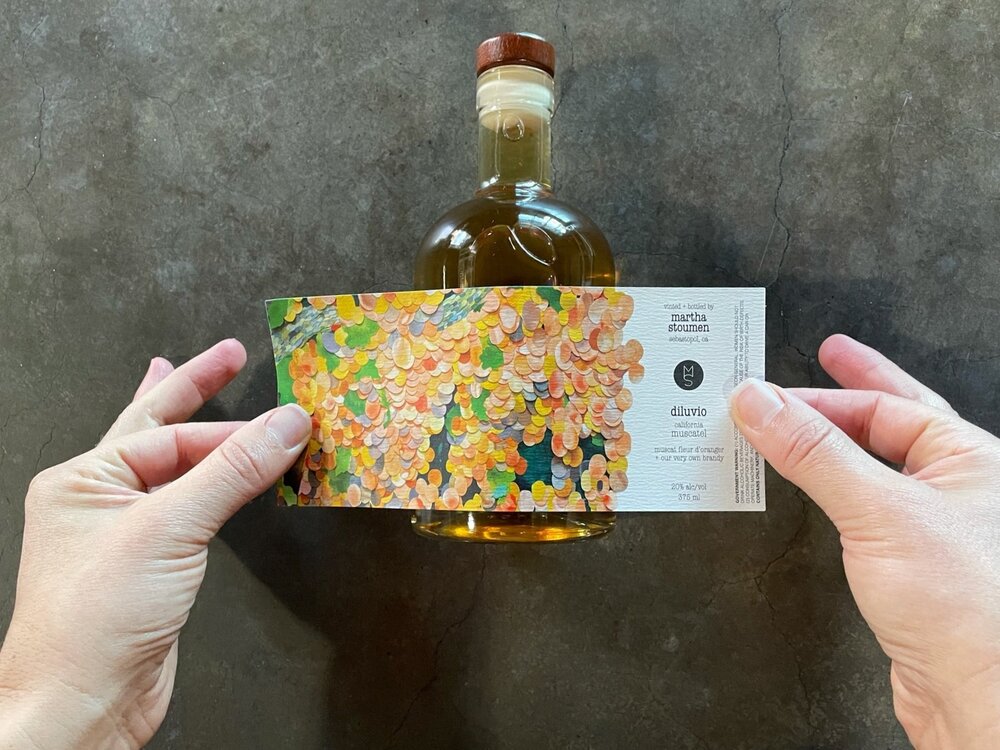
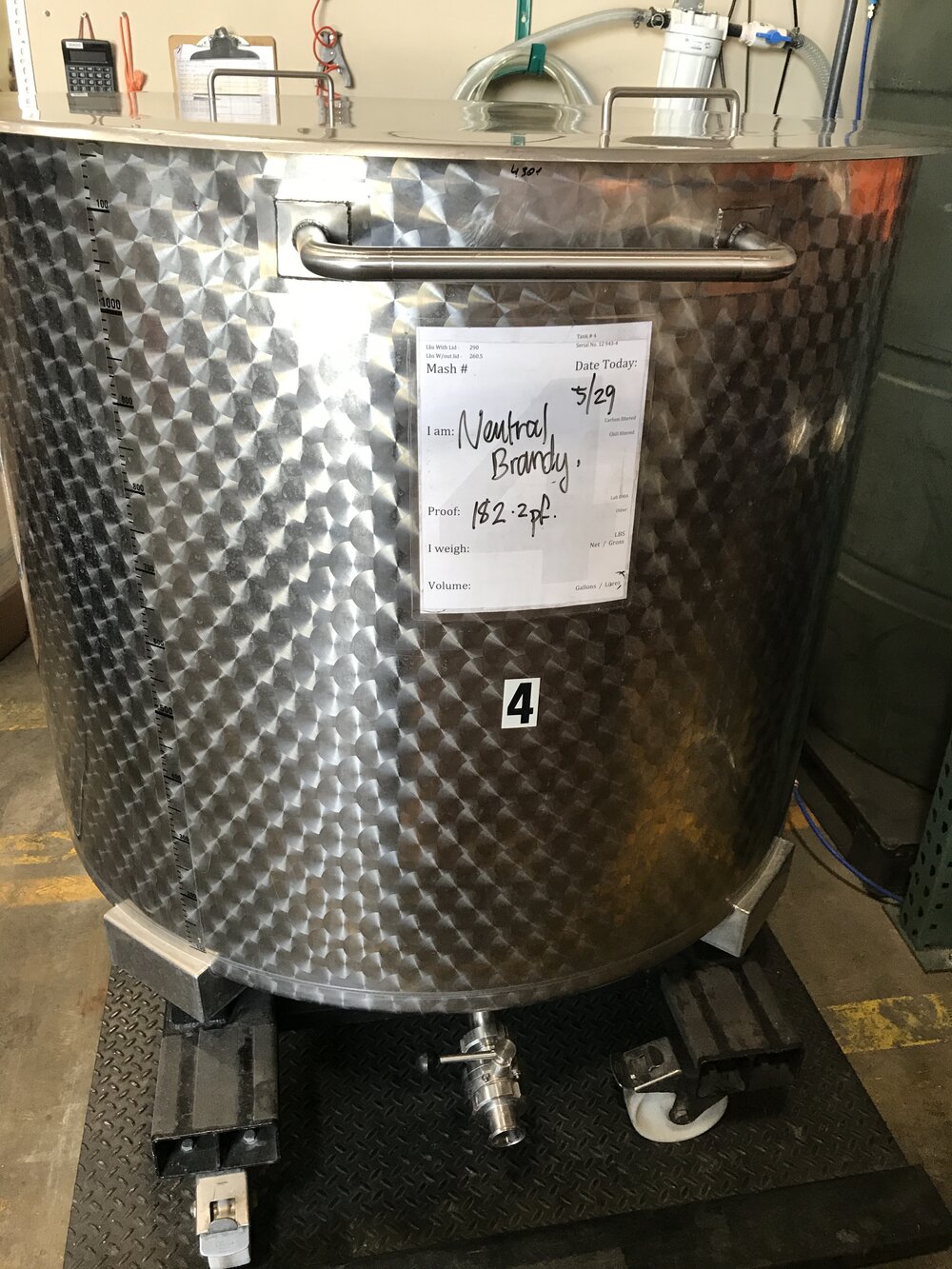
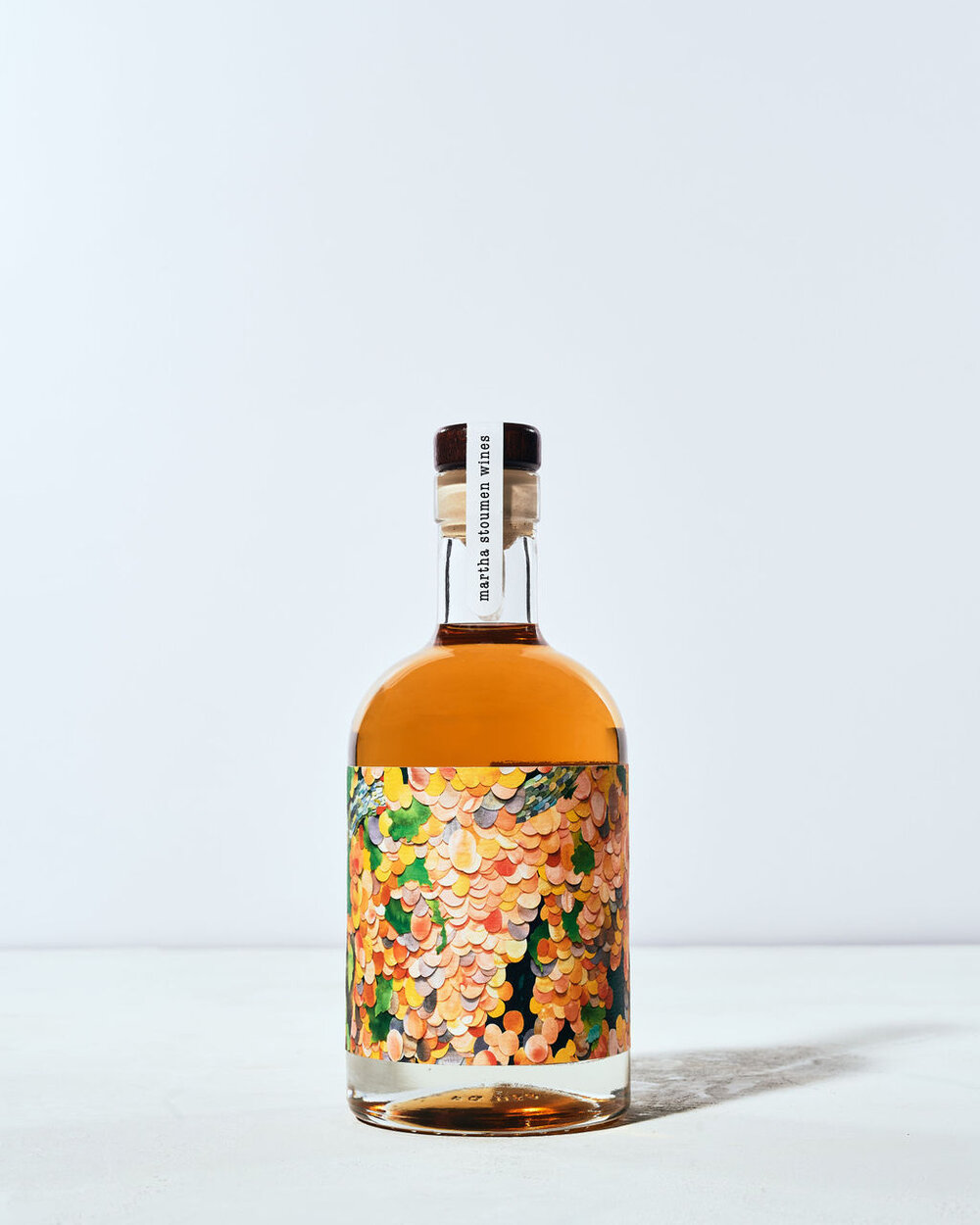
Carolynn Haydu, an Oakland-based artist whose artwork graces many of our bottles, designed this art especially for Diluvio. Her abstraction of a vine laden with a multitude of richly colored grapes speaks to the magic of the grape itself. When you taste Diluvio it is hard to imagine that what you are drinking—every smell, flavor and texture—comes from just one humble ingredient.

